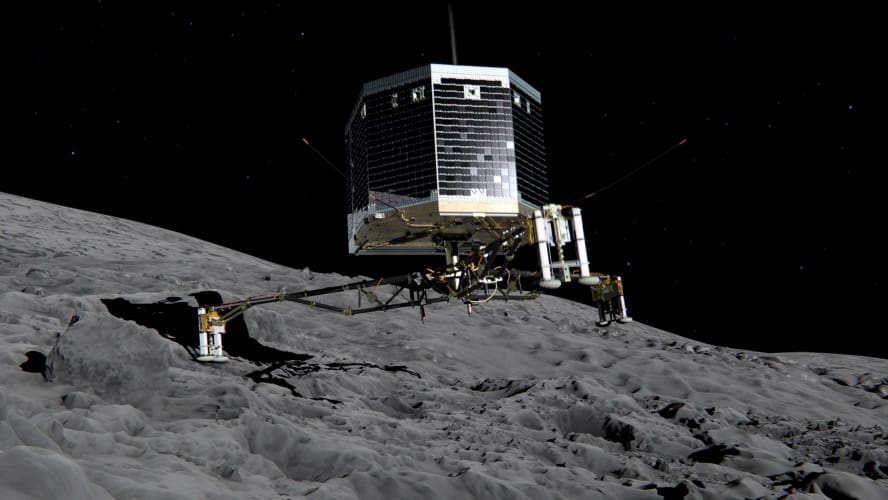Following seven months of hibernation, an 85 second ‘message’ from Philae was received at ESA’s European Space Operations Centre in Darmstadt, Germany, at 21.28 BST on Saturday June 13. The signals were sent via the orbiting Rosetta mother ship, from which Philae was launched to the surface of 67P last November.
According to ESA, more than 300 data packets have been analysed by the teams at the Lander Control Centre at the German Aerospace Centre (DLR). However, there are still more than 8,000 data packets in Philae’s mass memory that could provide the DLR team with information about what happened to the lander in the past few days on the comet.

“Philae is doing very well: It has an operating temperature of -35ºC and has 24 Watts available,” said DLR Philae project manager Dr Stephan Ulamec. “The lander is ready for operations.”
Scientists and engineers involved in the project will be both excited and relieved with this new development, as it was uncertain if Philae would be able to power up again following its hibernation. The last contact with the lander took place on November 15, approximately 60 hours after it touched down on the comet.
It was hoped that Philae would be able to recharge using its solar panels, but images sent from its landing position showed that a portion of the comet was partially obscuring the sun. Since then, 67P has travelled closer to the sun, and the intensity of the light Philae receives has increased, enabling it to reboot.
Upon analysing the latest data, the DLR team realised that Philae had actually been awake earlier, although this was the first time the lander had been able to communicate back to Earth. The communication unit on the Rosetta orbiter had been activated and awaiting contact from Philae since March 12.
“We have also received historical data,” said Dr Ulamec. “So far, however, the lander had not been able to contact us earlier.”
A priority for the lander now will be to carry out experiments that could not be completed during Philae’s initial period of activity on the comet, including drilling into 67P’s surface to analyse its composition. The first attempt to carry this out in November was unsuccessful.




Swiss geoengineering start-up targets methane removal
No mention whatsoever about the effect of increased methane levels/iron chloride in the ocean on the pH and chemical properties of the ocean - are we...